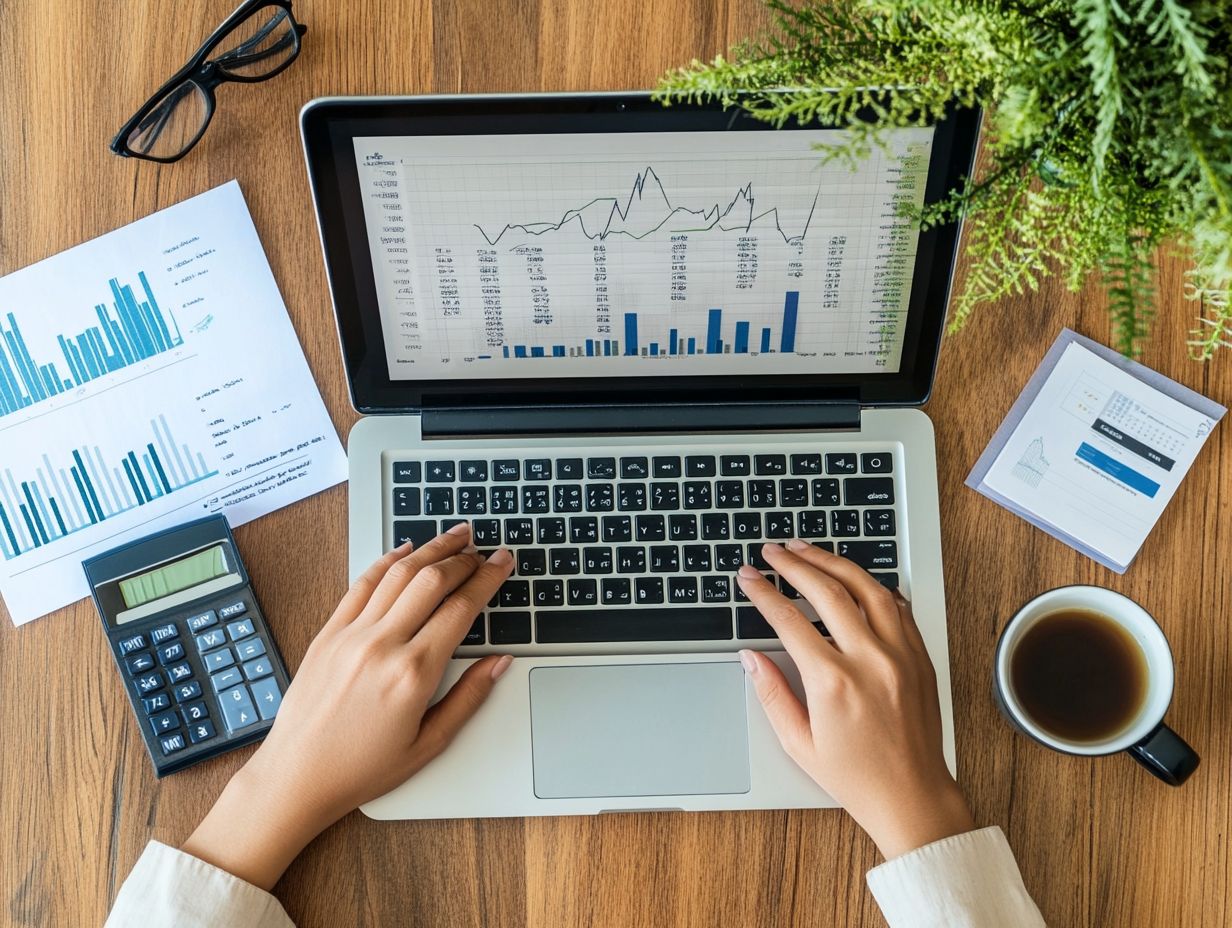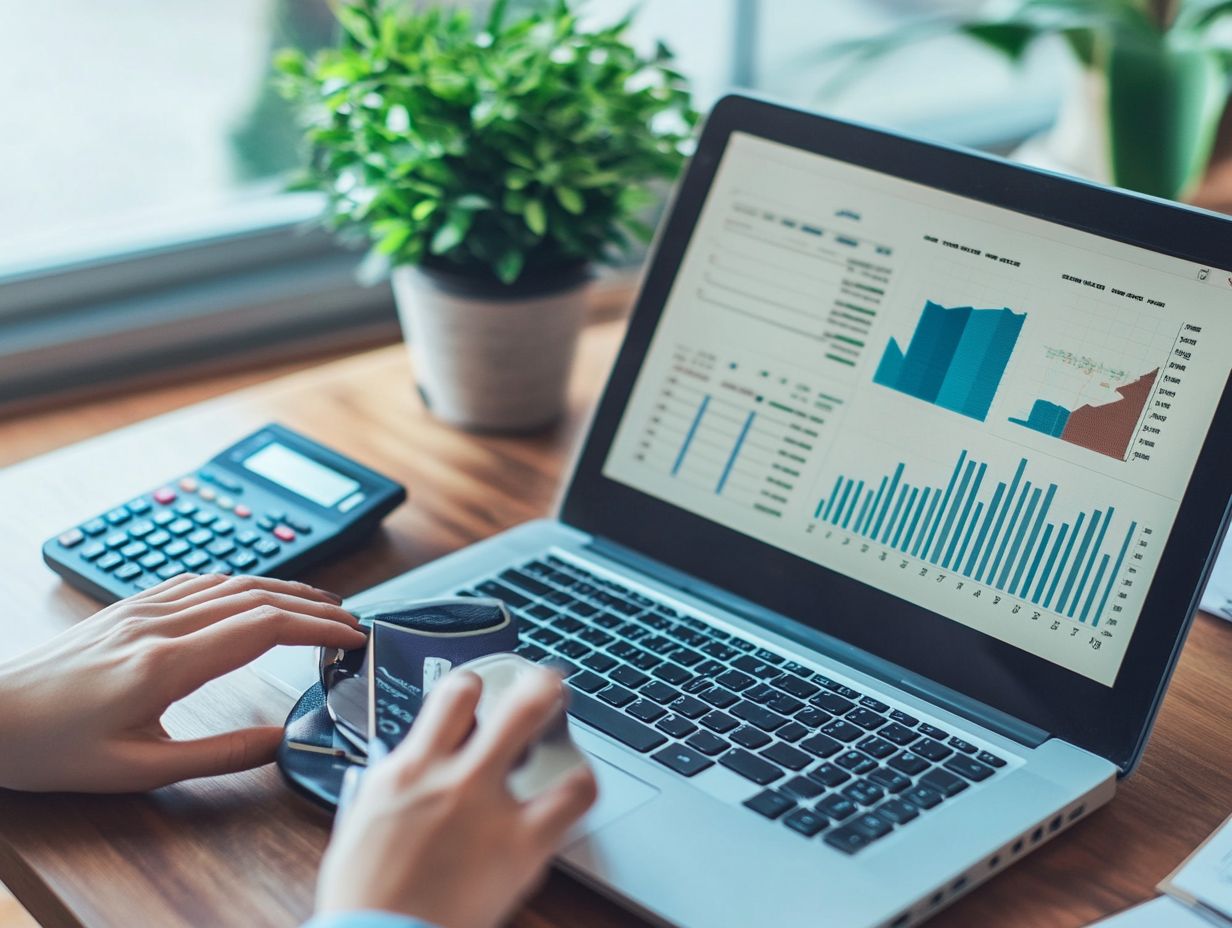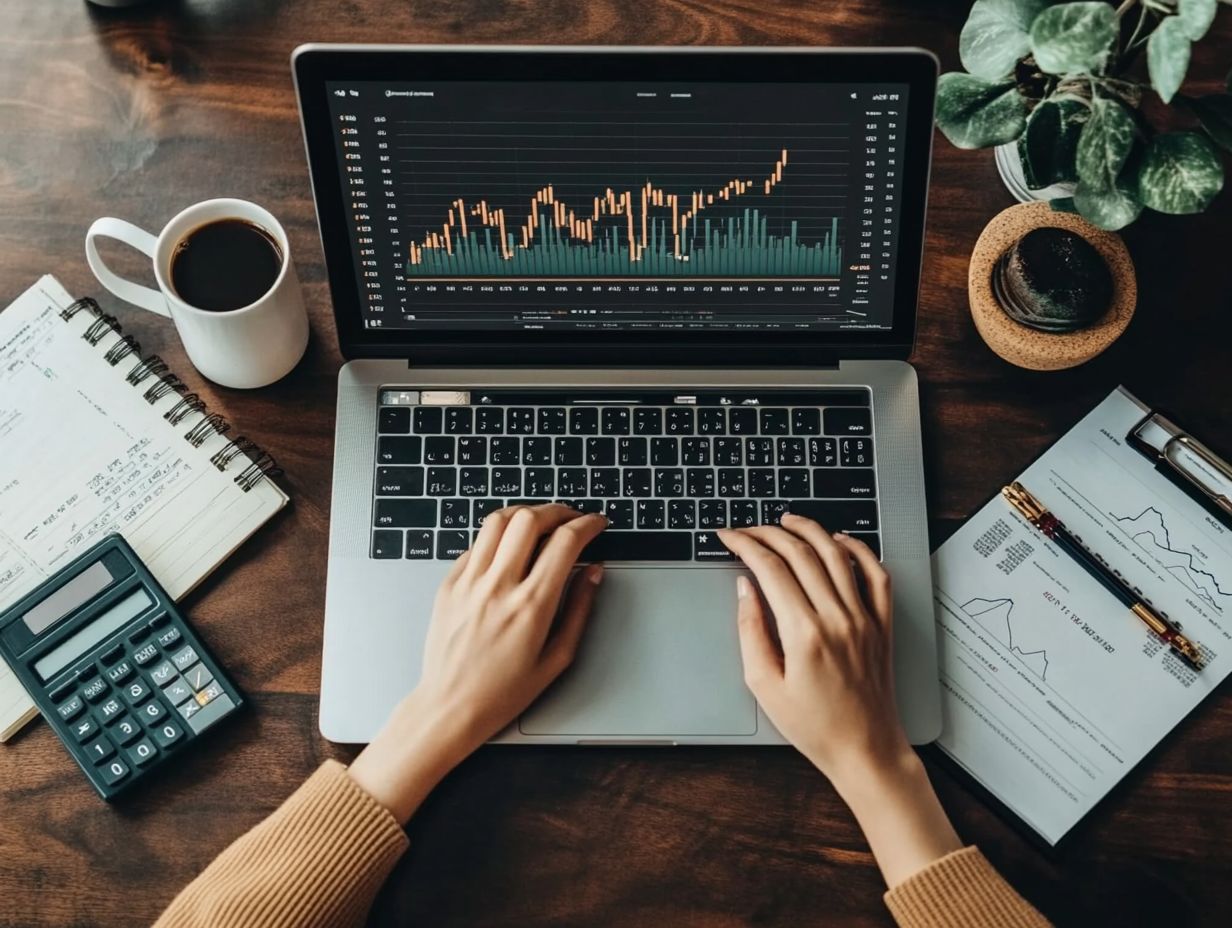How to Optimize Your Trading Strategy
In the dynamic realm of trading, a robust strategy is essential for achieving success. This article serves as your comprehensive guide to trading strategies, delving into their fundamentals and the diverse types available.
You ll uncover vital considerations for optimizing your approach, including market conditions and your own risk tolerance. We ll outline practical steps to refine your strategy and present valuable tools and resources designed to enrich your trading journey.
Get ready to take your trading to the next level!
Contents
- Key Takeaways:
- Understanding Trading Strategies
- Factors to Consider in Optimizing a Trading Strategy
- Steps to Optimizing Your Trading Strategy
- Tools and Resources for Optimizing Your Trading Strategy
- Frequently Asked Questions
- What is a trading strategy and why is it important to optimize it?
- How can I determine if my current trading strategy needs to be optimized?
- What are some common methods for optimizing a trading strategy?
- How much time and effort should be put into optimizing a trading strategy?
- Can optimizing a trading strategy guarantee success?
- Are there any risks involved in optimizing a trading strategy?
Key Takeaways:

- Learn the basics of trading strategies to find what works for you based on your goals and risk tolerance.
- Market conditions and risk tolerance are key factors to consider when optimizing your trading strategy.
- Research market trends and adjust your strategy continually. Use tools and seek expert advice to improve results.
Understanding Trading Strategies
Understanding trading strategies is vital if you seek to optimize your performance while keeping trading expenses in check. Effective strategies can profoundly influence your profit targets and help you manage risk, enabling you to navigate market fluctuations with confidence.
Research from respected organizations like the Kissell Research Group highlights the critical role of analyzing fees for buying and selling and the impact of market dynamics on your trading decisions. By gaining a solid grasp of these concepts, you ll be better equipped to appreciate how price appreciation can shape your overall strategy, allowing you to apply essential metrics such as how much risk you can handle and techniques for minimizing trading costs.
What is a Trading Strategy?
A trading strategy is your systematic blueprint for entering and exiting trades, designed to help you achieve specific profit targets while effectively managing risk.
These strategies are often grounded in meticulous market analysis, where you evaluate trends, price movements, and fundamental factors that could impact an asset s value. By establishing clear criteria for when to buy or sell, you can maintain discipline and sidestep emotional decision-making that frequently leads to losses.
Successful strategies weave in elements of risk management, such as setting stop-loss orders, which serve as safety nets to protect your capital from significant downturns. For example, a trend-following strategy might have you on the lookout for stocks that are on the rise, allowing you to establish a position, while a reversal strategy aims to seize opportunities in assets that are likely to change direction.
Ultimately, incorporating effective risk management techniques not only enhances the viability of your trading strategy but also paves the way for sustainable profitability in the long run.
Types of Trading Strategies
There are various trading strategies available, each designed to suit specific market conditions and personal preferences. These include day trading, swing trading, and scalping all aimed at enhancing your trading approach and maximizing your returns.
Take day trading, for example. It flourishes in volatile markets where rapid price fluctuations can translate into significant gains within a single day. Conversely, swing trading captures price momentum over several days or weeks, making it ideal for less turbulent market conditions.
Then there’s scalping, which involves executing numerous trades within short time frames to take advantage of tiny price movements. This strategy requires strict discipline and quick decision-making to be effective.
When considering your trading schedule, it s crucial to evaluate your risk multiples. This means setting stop-loss orders and defining profit targets to manage your exposure and safeguard your capital across various trading scenarios.
Factors to Consider in Optimizing a Trading Strategy
When optimizing your trading strategy, it s essential to take into account various factors, including market conditions and your own risk tolerance. This careful consideration will enhance the effectiveness of your trading and help minimize associated costs.
Market Conditions

Market conditions, including volatility (how much prices fluctuate) and potential price pullbacks, significantly influence the effectiveness of your trading strategy.
For example, during periods of high volatility, you might find yourself adjusting your parameters to embrace quick trades and take advantage of those short-term fluctuations. Metrics like the Average True Range (ATR) can act as invaluable indicators, guiding you in making decisions about optimal entry and exit points.
In a trending market where movements are consistently upward or downward, longer-term strategies may prove more effective. Here, you can utilize tools like Moving Averages to pinpoint potential support and resistance levels.
By understanding how these varying conditions impact the market, you can adapt your approach. Focus on critical data such as trade volume and market breadth. This ensures that your trading strategy remains responsive and effective.
Understanding Your Risk Tolerance
Risk tolerance is a crucial element in optimizing your trading strategy, as it defines how much risk you’re prepared to accept. This is clearly reflected in your risk-reward ratio (the potential profit compared to potential loss) and risk management practices.
Grasping this concept enables you to align your investment choices with your financial aspirations and emotional comfort. If you have a high risk tolerance, you might gravitate toward more aggressive trading strategies, aiming for profitability while acknowledging the potential for larger losses. Conversely, if your risk tolerance is on the lower end, you re likely to favor conservative approaches that prioritize stability and capital preservation.
Being aware of your personal risk appetite is fundamental in crafting your strategy. It helps you choose the right financial instruments, whether they are derivatives (contracts whose value is derived from an underlying asset) or equities (stocks), and implement essential risk mitigation techniques, like stop-loss orders, to safeguard your portfolio as you navigate the market s complexities.
Steps to Optimizing Your Trading Strategy
To elevate your trading strategy, adopt a structured approach that encompasses thorough self-assessment, diligent research into market trends, and a commitment to adjusting and testing your strategy in an iterative manner.
This methodical process will enable you to refine your tactics and enhance your overall performance in the market.
Conducting a Self-Assessment
Conducting a self-assessment is your gateway to optimizing your trading strategy. It allows you to evaluate past performance through a trading journal, pinpointing key areas ripe for improvement.
By diligently documenting each trade capturing entry and exit points, market conditions, and the emotions you experienced you can unlock valuable insights into your decision-making patterns. Analyzing performance metrics like win rates, risk-to-reward ratios, and average trade durations provides a clear, quantitative perspective on your success levels.
This reflective practice reveals your strengths and helps you seize every trading opportunity! It also uncovers recurring mistakes or emotional biases that might be hindering your trading effectiveness. Ultimately, these insights are the building blocks for refining your strategies, cultivating discipline, and enhancing your overall profitability in future trades.
Researching and Analyzing Market Trends
Researching and analyzing market trends requires you to collect market-impact data and grasp price appreciation patterns, all aimed at fine-tuning your trading strategies. This process is essential for anyone looking to enhance their decision-making skills in the ever-shifting landscape of finance.
By utilizing a variety of methods such as technical analysis, where you assess historical price movements, and fundamental analysis, which emphasizes market news and economic indicators you can gain deeper insights into potential market shifts. Incorporating tools like sentiment analysis allows you to gauge market emotions and reactions, enriching your understanding even further.
Ultimately, weaving these approaches into your trading routine helps refine your strategies, boosts your chances of executing profitable trades, and mitigates the risks associated with volatile market conditions.
Adjusting and Testing Your Strategy

Adjusting and testing your strategy is crucial for ensuring its effectiveness in the ever-changing market landscape. Use advanced tools like trading simulators and follow principles such as the optimal F to refine your approach.
This process involves systematic evaluation through backtesting, analyzing historical data to gauge your strategy’s potential performance. You might also consider forward testing to assess your strategies in a controlled live environment.
Incorporating methodologies like Monte Carlo simulations, a method to predict potential outcomes by simulating different scenarios, can offer valuable insights into the probabilities of various outcomes. This can help you evaluate risk exposure.
By leveraging analytics platforms and performance metrics, you can make informed adjustments, ensuring your strategies remain robust and adaptable in a dynamic trading environment.
Tools and Resources for Optimizing Your Trading Strategy
Using the right tools boosts your trading strategy. This includes leveraging technical analysis tools, engaging with trading simulators, and seeking expert advice all of which can significantly enhance your trading performance.
Technical Analysis Tools
Technical analysis tools are essential assets for you as a trader. They offer critical insights into support and resistance levels, volatility, and overarching market trends that inform your trading decisions.
Tools like moving averages, the Relative Strength Index (RSI), and Bollinger Bands enable you to assess market momentum and anticipate potential price shifts. Analyzing historical price data provides a richer understanding of market dynamics.
For example, using moving averages can help you spot trend reversals, while the RSI serves as an indicator of whether an asset is overbought or oversold. Adding candlestick patterns can deepen your insights by revealing trader sentiment and market psychology.
This holistic view is crucial for crafting successful trading strategies.
Trading Simulators
Trading simulators like Forex Tester and TradingView provide a risk-free environment to practice and refine your strategies without fearing capital loss. These tools let you dive into real-time simulations!
Experimenting with various market conditions and timeframes is possible. You can manipulate variables like leverage or trading hours to see how those adjustments impact your performance.
By providing a space to make mistakes without consequences, these simulators offer invaluable learning opportunities. Many platforms include features like performance analytics, helping you pinpoint strengths and weaknesses in your strategies.
This ultimately leads to more informed and confident trading decisions when you enter the live markets.
Expert Advice and Mentorship
Seeking expert advice and mentorship from seasoned traders, especially those associated with the Kissell Research Group, offers invaluable insights into optimizing your trading strategies.
This guidance sharpens your skills and prepares you for immediate success! Learning directly from experienced professionals allows you to explore various approaches to risk management, market analysis, and technical indicators.
Such mentorship is especially beneficial in volatile environments, where the right strategy can make the difference between triumph and defeat.
Engaging in the exchange of ideas within these mentoring relationships fosters a more adaptable mindset. This enables you to respond effectively to ever-changing market conditions and enhances your overall trading proficiency.
Frequently Asked Questions

What is a trading strategy and why is it important to optimize it?
A trading strategy is a set of rules and guidelines that a trader follows to make decisions about buying and selling assets. Optimizing your trading strategy can be a game-changer! It boosts profits and minimizes losses while improving overall performance.
How can I determine if my current trading strategy needs to be optimized?
Signs that your trading strategy may need optimization include consistently low returns, frequent losses, or difficulty adapting to changing market conditions. Regularly evaluating and adjusting your strategy is essential to ensure it remains effective.
What are some common methods for optimizing a trading strategy?
Common methods for optimizing a trading strategy include backtesting, forward testing, and using different indicators or time frames. Testing your strategy using past market data helps reveal its potential performance. Finding the right combination of methods is key to aligning with your trading style and goals.
How much time and effort should be put into optimizing a trading strategy?
The time and effort required to optimize a trading strategy vary based on individual goals and strategy complexity. Always analyze and test different approaches carefully, but avoid over-optimization, as it can lead to unreliable results.
Can optimizing a trading strategy guarantee success?
No, there is no guarantee of success in trading, even with an optimized strategy. Market conditions and individual factors can still impact performance. However, optimizing your strategy greatly increases your chances of success and enhances your overall trading experience.
Are there any risks involved in optimizing a trading strategy?
As with any market decision, risks are involved in optimizing a trading strategy. Always test thoroughly! This could save you from unexpected losses. Be sure to have a solid risk management plan in place to mitigate potential losses.
Ready to take action? Evaluate and optimize your trading strategy today!






